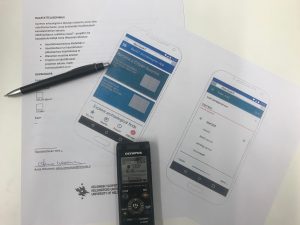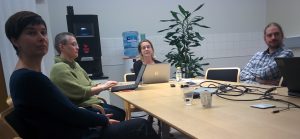Hi all!
It is nice to be here and tell the good news about the SuALT application. Firstly, I want to mention that I am happy to be a part of this project which is also related to my masters thesis at Aalto University. When I heard about the SuALT project for the first time, I became very interested and wanted to be a part of it. Many thanks to all who helped me to take part in this project.
Technology is growing at a rapid rate and changing our lives continuously. Nowadays, most of the services are digitalised, and these digitalised services have great importance in our daily lives. Digitalisation improves efficiency and productivity, and at the same time, it boosts all other processes. SuALT aims to produce a digital platform for reporting and studying archaeological finds. Furthermore, it intends to enable the end users to contribute directly to collections.
We have started designing the prototype of the SuALT application. In this prototype, we have used user-centred design which means that we have focused on the users and their needs. We aim to create a highly usable service for the end users. We have tried to take into account the most critical user needs and created mockups based on them. In this stage, we have followed the following design principles:
- Mobile first
- Clean and fresh
- Communication
We will focus on providing a responsive and mobile friendly service which should work without any problems on all mobile devices. In this service, we would like to have a clean and fresh design. Clarity and simplicity help to create a better user experience. In addition to these, communicating efficiently the end users is essential for us. We would like to have a balance between readability, legibility, colour and texture.
The SuALT application will have an intelligent form which will help the users to report their finds. In addition to reporting, it educates them by providing continuous feedback and learning materials so that the SuALT application can work as a teaching tool. The main idea here is to teach during the form filling process.
In this form we have followed the following design principles:
- Make it simple
- Reduce cognitive and physical load
- Use conditional logic
- Break into steps
- Provide help and autocomplete
- Teach by filling in
We want to keep the intelligent form as simple as possible. To achieve this we strive to minimise the total number of free text fields which will reduce the interaction cost so that the end user will accomplish more with less effort. Furthermore, the form will provide autocomplete functionality and use ontologies for the core form fields. For example, it will be able to retrieve location coordinates and the current date automatically.
The intelligent form will make it possible to use a device camera so that users can take pictures of the find and surroundings. Guidelines for taking more professional and consistent photographs will be provided. Also, the form will use conditional logic to configure fields to display or hide based on the user’s response to other fields. In addition to these, it will consist of multiple steps and a possibility to save it as a draft during these steps.
We are going to publish the first test version of the SuALT application this year. Stay with us!



